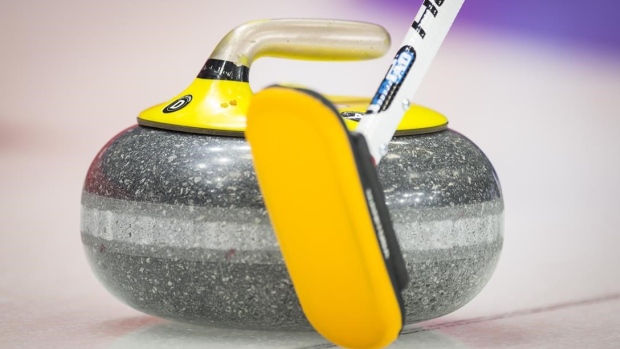Mar 19, 2019
Curling's longstanding 10-versus-eight debate continues to simmer
At the 1999 World Curling Federation's annual general meeting in Saint John, N.B., then-president Gunther Hummelt begged member federations to vote in eight-end games.
The Canadian Press

At the 1999 World Curling Federation's annual general meeting in Saint John, N.B., then-president Gunther Hummelt begged member federations to vote in eight-end games.
Curling had just returned to the Winter Olympics a year earlier. The WCF was under pressure from the International Olympic Committee to shorten games for television.
The members voted no.
World championship and Olympic curling, and by extension Canada's national championships, remain 10-end games two decades later. Curling Canada isn't going to shorten games unless the WCF does.
The World Curling Tour, including its Grand Slams, are eight-end affairs.
The 10-versus-eight debate still percolates today with varying opinions among teams.
"We welcome the test of 10 ends," says Sault Ste. Marie skip Brad Jacobs.
"Eight ends all day," counters Moncton's Terry Odishaw.
Chelsea Carey's Calgary foursome is playing 10-enders at the women's world championship in Denmark this week. Her vice Sarah Wilkes is an eight-end aficionado.
"They're faster, you have to be a little bit more precise, you have to catch on to the conditions earlier and you have to be sharp out of the gate," Wilkes said at the national women's championship in Sydney, N.S.
"It makes it a little bit more exciting because a lot of teams just blank out the first two ends and then it's an eight-end game anyway. If there was a petition somewhere, I would sign it."
The introduction of the five-rock, free-guard zone this season added another wrinkle to the discussion.
Now that stones in front of the rings can't be removed from play until five have been thrown in an end, instead of the previous four, there's arguably more sweeping and certainly more thinking required in a game.
"As opinionated as I am, I haven't really developed a strong opinion one way or the other," says skip Brad Gushue from St. John's N.L.
"With five-rock rule, 10 ends is a grind. It's a long time out there."
"From a pure television and marketing perspective, I think eight ends is the way to go. From a pure curling perspective, I think 10 is a better test of who the better team is."
Current Canadian champion Kevin Koe of Calgary prefers it as is — eight ends for WCT events and 10 for nationals, world and Olympic Games.
"I'm OK with the Brier and the worlds 10 ends," he said at the national men's championship in Brandon, Man. "I think for once a year, twice a year, 10 ends in this format is OK. I wouldn't be a fan of year around.
"I like the five-rock rule for sure. It's a little draining out there. Even when you're up a few there's no running and hiding."
His brother Jamie Koe, who skipped Northwest Territories in Brandon, is an eight-end fan.
"Eight is where the game is headed," he stated. "The shorter game is way better for an underdog.
"I think when you're playing those top teams, probably the less ends the better. The less ends they have hammer, the better. You're not going to outplay them for too long."
The WCF continues to bat around the question of eight versus 10, and has tested eight ends at the new four-stop World Cup of Curling this season.
"It is a matter the World Curling Federation is deliberating, including with athletes, broadcasters and other stakeholders," the WCF said in a statement to The Canadian Press.
"Now that we have the Curling World Cup series, which features eight ends, the World Curling Federation has a platform to gauge the benefits of eight end games.
"Ultimately, the World Curling Federation member associations would make a final decision on this matter if it is brought to a future, annual congress."
Nolan Thiessen, who won a world title with Kevin Koe in 2010, sits on the WCF's athletes commission which will have a voice at the table on the subject.
"We one hundred per cent talk about it," Thiessen said. "It is a hot topic of conversation.
"We will probably be going to our athletes with a little bit of a survey this spring where we're going to be asking them some questions.
"To me, the biggest thing is, you've got to answer the question, 'why?' I don't think anybody has firmly said 'this is why we need to change' or 'this is why your game is going to be better if we lose two ends.'"
ICE CHIPS
Speaking of eight-end curling games, the Canadian mixed doubles championship kicked off Tuesday night in Fredericton, N.B.
Reigning Olympic champion John Morris has teamed up with Jolene Campbell for the five-day event that determines Canada's rep for next month's world championship in Stavanger, Norway.
Last year's world bronze medallists Kirk Muyres and Laura Walker are back to defend their Canadian title.
Other big-name duos include Jennifer Jones and Brent Laing, Jocelyn Peterman and Brett Gallant, Reid Carruthers and Kate Cameron, Brendan Bottcher and Bobbie Sauder.
____
The field for the national senior curling championship opening Friday in Chilliwack, B.C., reads like a Who's Who of Canadian curling.
Two-time men's world champion Al Hackner, Olympic bronze medallist Glenys Bakker, 2006 national champion Francois Roberge and 1996 world champion Jane Hooper-Perroud are among those vying for another title to add to their curling resumes.
Hackner is featured in the new Netflix documentary series "Losers" in a "Stone Cold" segment about his epic battle with Pat Ryan at the 1985 Brier.
Ryan's loss to "the Iceman" ultimately changed competitive curling forever.
Defending women's champion Sherry Anderson of Saskatchewan is chasing a three-peat in Chilliwack, while Ontario's Bryan Cochrane has won two of the last three men's titles.
The winners represent Canada at the 2020 world senior championship.
— With files from Gregory Strong in Toronto.
